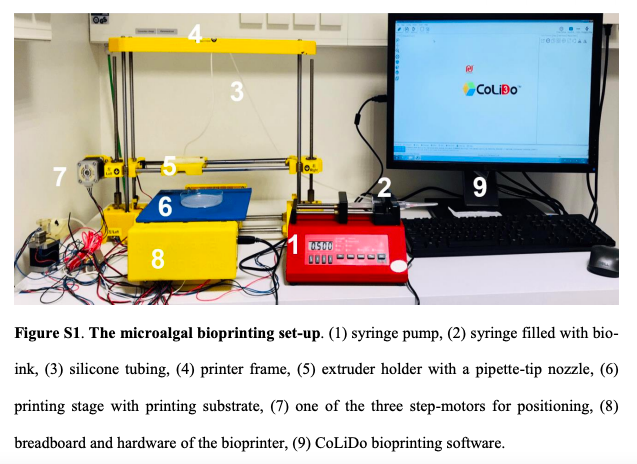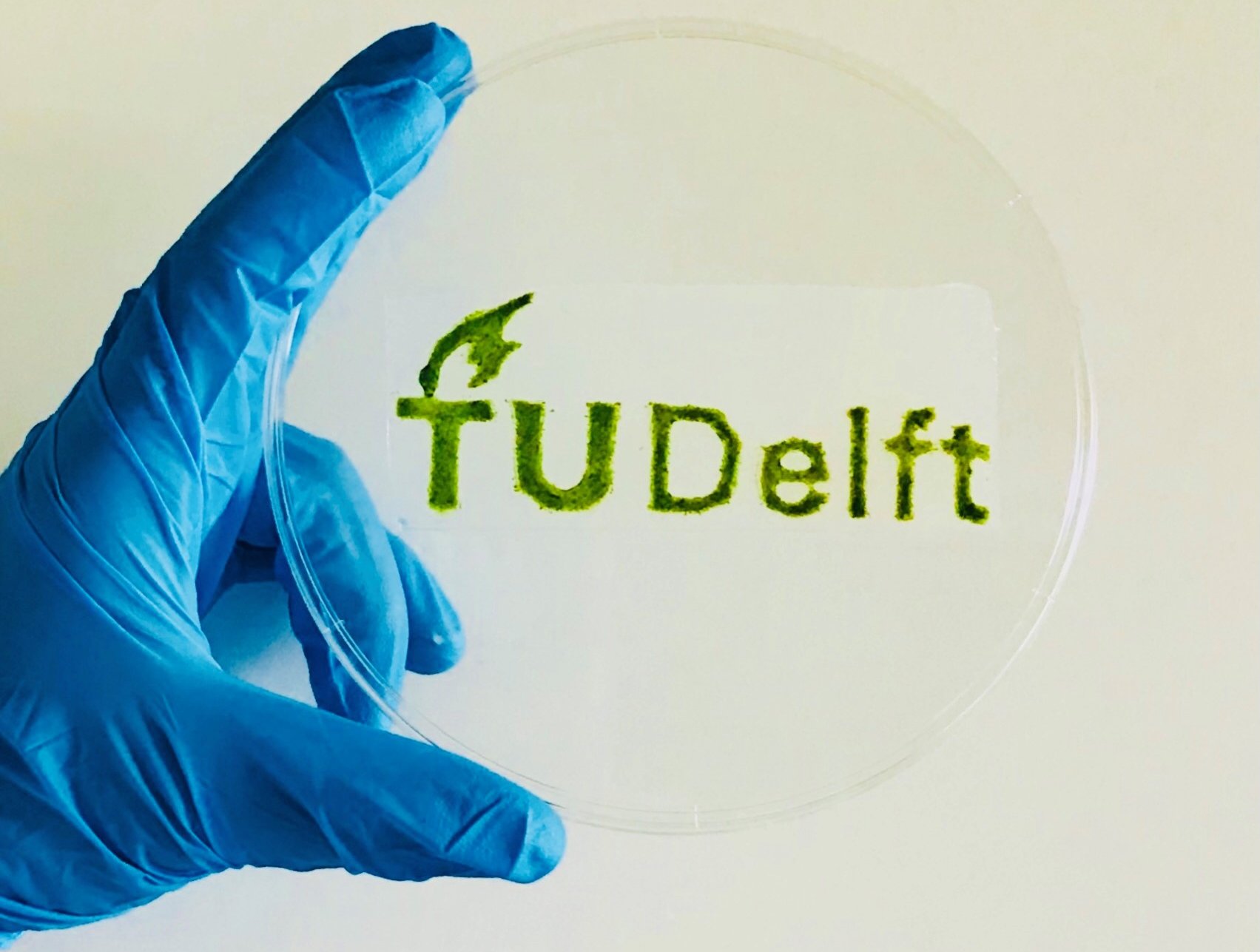Researchers at the Delft University of Technology (TU Delft) have developed a method for bioprinting algae to create living, photosynthetic materials that are tough and resilient. The resulting study, published in the journal Advanced Functional Materials, describes the outcome of the research and its implications for the future.
The project began with the 3D printing of dead cellulose excreted from bacteria, which demonstrates such useful qualities as flexibility, strength, toughness, and shape memory. A 3D printer was then used to deposit living algae onto the cellulose substrate. In turn, the material had both the photosynthetic ability of the algae and the strength of the cellulose. Not only was the resulting material biodegradable and its production scalable and low-cost, but the photosynthetic nature of the material means that it could feed on sunlight and potentially regenerate.
The authors noted that the materials could survive for at least three days without nutrients, but nutrients would obviously extent their survival. Printed objects could be readily scaled up to ≥70 cm × 20 cm in size. The cellulose made the printed objects strong enough to stand on their own, but they could also be detached and reattached to different surfaces.
“The printing of living cells is an attractive technology for the fabrication of engineered living materials.” says Marie-Eve Aubin-Tam, an associate professor from the Faculty of Applied Sciences. “Our photosynthetic living material has the unique advantage of being sufficiently mechanically robust for applications in real-life settings.”
Applications for such a unique material include the fabrication of artificial leaves that could convert water and carbon dioxide into oxygen and energy. With the ability to convert the sugars produced by the leaves into fuel, it could be possible to generate energy in places where plants don’t grow well, such as in space.
“We created a material that can produce energy simply by placing it into the light,” says Kui Yu, a Ph.D. student involved in the work. “The biodegradable nature of the material itself and the recyclable nature of microalgal cells make it a sustainable living material.”
Another application could be the fabrication of elements that sense and respond the way that plants do. Elvin Karana, from the Faculty of Industrial Design Engineering, elaborated:
“What if our everyday products were alive: could sense, grow, adapt, and eventually die? This unique collaborative project shows that this question is beyond the realm of speculative design. We hope our article will spark new conversations between design and science communities and inspire new directions for investigations for future photosynthetic living materials.”
Subscribe to Our Email Newsletter
Stay up-to-date on all the latest news from the 3D printing industry and receive information and offers from third party vendors.
You May Also Like
New Report: Semiconductor Industry to See $1.4B in 3D Printing Revenues by 2032
“The semiconductor sector has become the most strategically significant area of global industry.” Truer words are hard to come by when it comes to the modern world, and they are...
Will Photonic-Crystal Lasers Revolutionize 3D Printing?
Powder bed fusion (PBF) for metals and polymers predominantly utilizes lasers as the primary heat source. Some directed energy deposition (DED) technologies also employ lasers, while various vat polymerization methods...
3D Printing Unpeeled: Orbex Investment, IndoMIM and HP, Ultrasonic Waves
INDO-MIM has bought three HP Metal Jet S100 printers, operating two in India and one in Texas. This is a win for HP because the company has deep experience in...
3D Printing Webinar and Event Roundup: April 21, 2024
It’s another busy week of webinars and events, starting with Hannover Messe in Germany and continuing with Metalcasting Congress, Chinaplas, TechBlick’s Innovation Festival, and more. Stratasys continues its advanced training...

































